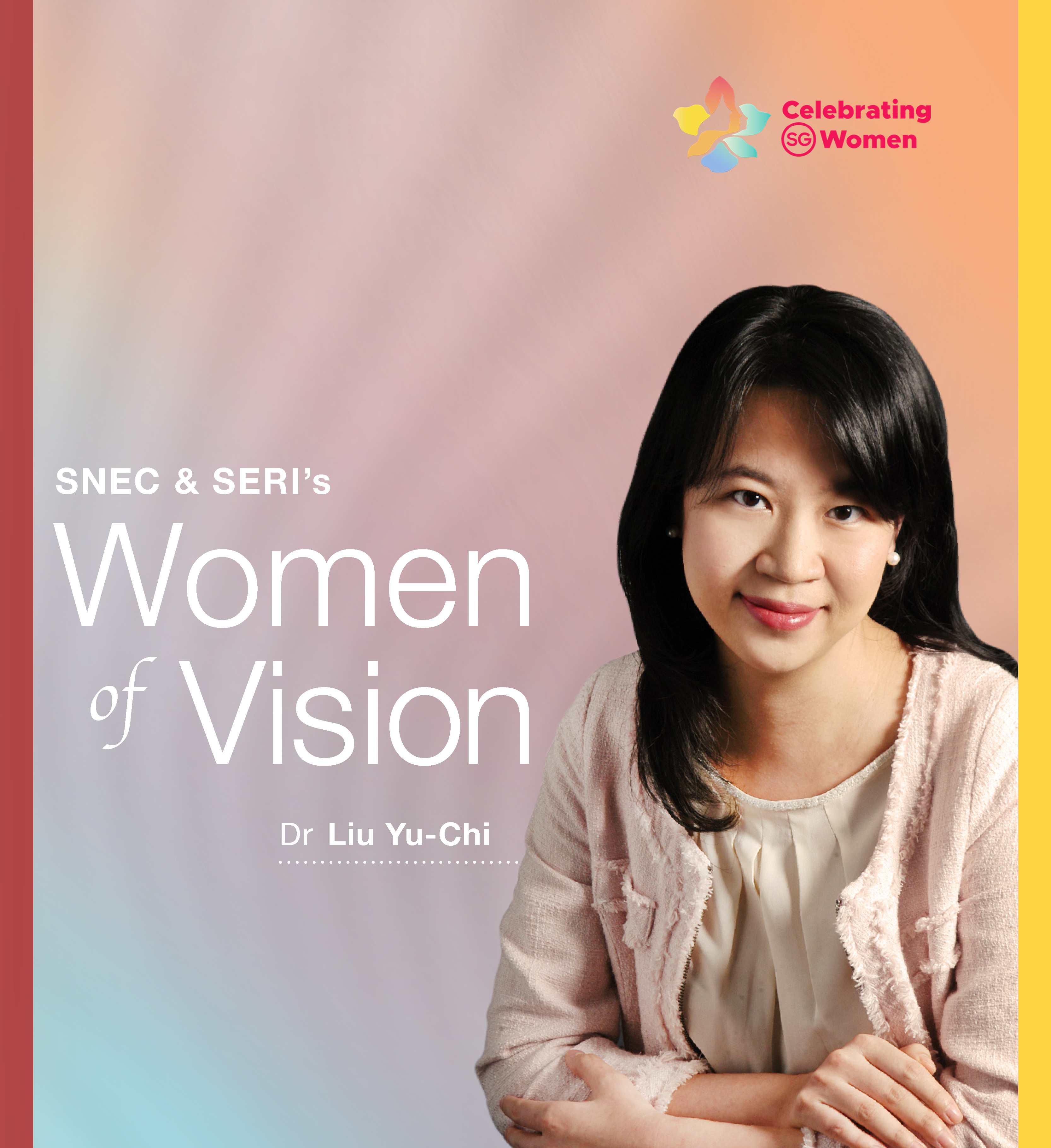Women of VisionCelebrating SG Women
In the Year of Celebrating SG Women, we present stories which showcase and celebrate women’s multi-faceted contributions and progress at SNEC and SERI.
Join us to honour and acknowledge our team of amazing women who have made impact in the field of Ophthalmology, inspiring those around them with their brand of ethos in life.

Dr Liu Yu-Chi
Clinician Scientist, Cornea and Refractive Surgery Research Group, SERI
Junior Principal Investigator, Tissue Engineering & Cell Therapy Research Group, SERI
In your dual roles as Clinician and Researcher, which do you prefer and why?
I like both roles, and they are interlinked in my life. As a clinician, I see what patients need and what can be improved through research. These unmet needs are transformed into my research goals. However, it’s not easy being a clinician scientist, straddling the fields of clinical medicine and scientific research. The journey is long and requires a well-structured and supportive ecosystem.
Which female role models inspired you?
Women now make up 20–30% of all ophthalmologists around the world.1 There are many outstanding female HODs, ophthalmologists, surgeons, physicians and scientists around me, and I always learn a lot from them about having vision, courage, focus and strategic planning. My dad, who is also a medical doctor, has been telling me since I was a little girl, “Do not struggle with the fear of making mistakes, and be confident in yourself.”
What is your hope for the current research you’re working on in terms of women’s role in science and heading organisations?
Recent studies have shown that while women are increasingly represented in academic ophthalmology, the rates decrease at higher levels of academic rank, with women making up 43% of assistant professors, but only 37% of associate professors and 15% of full professors.1 In addition, the gender gap remains at many subspecialty conferences, especially for invited talks. There is still much we can do. I hope I can help contribute to the supportive culture and women networking by encouraging and mentoring junior female doctors who are interested in the career of clinician scientists or academic ophthalmology.
How would you encourage more girls to pursue a career in ophthalmology?
I hope to see more girls pursuing a career not only in ophthalmology, but also other opportunities in science, technology, engineering and mathematics (STEM). I am often asked how to achieve work-life-family balance; in my opinion, there is no perfect answer. My experience is to prioritise the roles, lower the expectations, make a structured and efficient schedule, and delegate some tasks to people whom you trust — we do not have to have it all or do it all! Many successful women manage work, life and family well. So keep a foot on the gas pedal and keep going!
1 Source: "Gender of Presenters at Ophthalmology Conferences Between 2015 and 2017" (Am J Ophthalmol 2020; 213:120–124)
Click
here to check out the
Women of Vision series.
